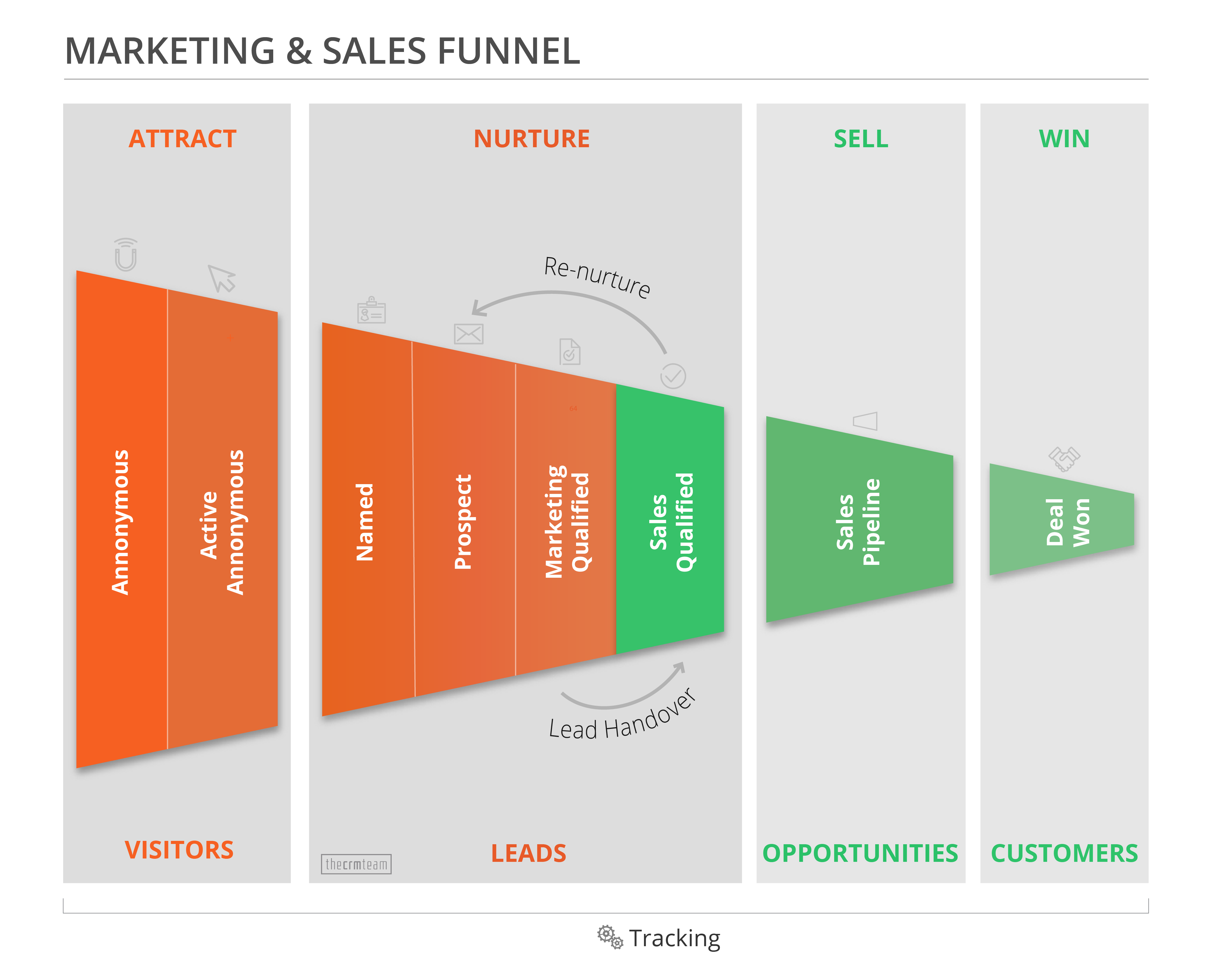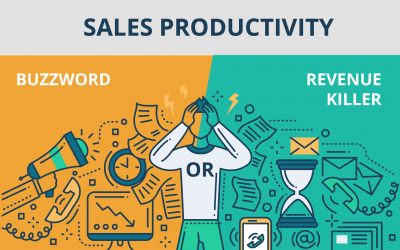No Results Found
The page you requested could not be found. Try refining your search, or use the navigation above to locate the post.

Staying ahead of the competition is a must. Here’s six things you need to be doing as a sales manager in 2018:
Gut-feel and experience are essential guiders of decisions in sales teams, but these shouldn’t be used alone. Accessing relevant data to get feedback and forecast is now standard in today’s technology age. Modern sales apps allow pro-active tracking of customers and competitors. This reduces guesswork and enables metrics to be developed that are useful predictors of buying behaviour. Accessing real-time feedback also revolutionises sales meetings. Instead of spending time getting status updates, more time can be spent on coaching and training. Easy-to-see overviews tailored to your requirements make forecasting a pleasure. With a full sales solution, sales processes can also be standardised and streamlined. This leads to greater efficiencies and quicker onboarding of new sales reps.
Syntel Case Study
Syntel is a US $825m IT and outsourcing company. Recently, they were growing rapidly and needed a system to revamp their sales processes. They needed something that could manage leads and opportunities right through to closure. The ability to integrate marketing campaigns was important to drive impact and growth. By deploying a Microsoft Sales and Marketing solution, they were able to see their sales pipeline at multiple levels in real-time. Global account teams were able to see the progress of their colleagues in different territories. This spurred teams on to better performance. Revenue forecasting became much more reliable and sales processes were tracked and improved upon. This allowed growth to continue. Management of sales teams became so much easier. You can read the full case study here.
When a sales rep moves on, valuable customer information may go with them. This is always a risk if reps keep their own prospect and customer data in spreadsheets. The solution is to bring it all into the cloud in one system. That way everyone on the team can see the data and add to it, giving a richer understanding of the customer. Your customer and prospect data is a key asset for your sales team. Centralising this allows the information to grow and mature.
Trek Case Study
Trek sells bikes through a network of independently owned retailers. They rely on a close, supportive relationship between the local sales reps and the store owner. In the past, when a rep left or retired it would take years to rebuild the rapport and customer knowledge. By installing a Microsoft Sales solution, Trek were able to see account histories, financial data and inventory all in one place. New reps had all the info they needed to connect meaningfully with store owners. Event reports and weekly updates were sent out using the sales solution. This ensured sales reps had detailed records on customers, making the customers feel known and cared for. You can read the full case study here
Reps spend 75% of their time on non-selling activities. But with modern sales apps, this can be dramatically reduced. Empower your sales reps to have all the customer info they need on their phones. Allow them to update deal info as soon as the meeting is over and so give you accurate forecasting information. There are a number of comprehensive systems on the market. At The CRM Team, we use the Microsoft Dynamics 365 for Sales (compatible with iOS, Android and Windows). It has seamless integration with Office 365.You can track all your customers and prospects without ever leaving Outlook.
CSX Transportation Case Study
CSX Transportation has 32,000 employees. Previously, customer information was spread over multiple systems. There was no way of seeing customer touch points across different business groups. Frustratingly, sales information wasn’t held centrally. By bringing all this information into one system, sales teams were able to save on their admin time. Consequently, they spend more time building customer relationships. It was only a matter of time before revenue increased. Read the full case study here
Nowadays, the best sales teams collaborate regularly on accounts. Learnings are shared across teams, and cross-selling opportunities are identified more easily. This is the case whether you run an inbound sales team or have reps on the road. With greater collaboration, teams can respond quicker to new sales opportunities.
Nat West Bank Case Study

Recently, UK Bank Nat West installed a Microsoft CRM solution, going live to 3000 users. Now, when a customer contacts the bank, sales staff have all the relevant information at their fingertips. It doesn’t matter which team the customer made their initial contact with. This smart pooling of customer data has led to increased cross-selling. The increased revenue from this alone will provide a return on investment by 2018. Read the full case study here.
In a world of smart phones, it’s only natural that sales and customer data should be accessible via mobile devices. This sort of access not only increases productivity but also keeps sales teams connected and aware of what each other is doing. Mobile sales solutions allow for flexibility and responsiveness to customer needs. A good system will be able to work whether there is web access or not. It should also provide a cloud backup so that data is never at risk.
Grant Thornton Case Study
Grant Thornton LLP is one of the world’s largest professional services providers. Recently, they installed a new CRM solution with mobile sales capacity. Rick Stow, their Head of Client Relationship Management, said: “One of the most appealing aspects… is the ability to deliver the same experience across multiple platforms. Whether you’re opening a form from within Outlook, from a browser, or on a mobile device, you have full functionality.” Stow says this has resulted in their workforce being more connected and more productive. Ultimately, enabling them to service their clients better. Since upgrading to a CRM system with a mobile sales capability Grant Thornton LLP has experienced:
– a 450% jump in the number of sales opportunities,
– a 36% increase in average win value, and –
– a 700% rise in the number of contacts in the system.
Read the full case study here.
Not knowing when prospects interact with you is a hinderance to your sales process. By adopting a combined marketing and sales solution you can get quick insight when prospects browse your website, read an article or download a white paper. It also helps marketing and sales team align better, ensuring that marketing hands over only quality leads.
Crowe Horwath Case Study
Crowe Horwath LLP is a performance consulting firm. They decided to bring all sales records and customer information under one sales solution. Dave Keever, Principal at Crowe explains the impact:
“We now have full visibility of our marketing efforts around a contact or account. We can see, for example, if a customer or prospect opts in on an email or has downloaded any of our white papers, and we can then discuss that with them in a meeting. Before, it could take a day or two to find out about an account and the surrounding marketing activities. Now, it takes seconds.” Keever says that the adoption has been very cost effective: “Both the greater visibility into our sales pipeline and the increase in the number of users are contributing to our return on investment. We expect the payback period to be between nine and 15 months.”
Read the full case study here.
The page you requested could not be found. Try refining your search, or use the navigation above to locate the post.
Discover More Stories

Now those sleepless nights have arrived!
On Monday, Microsoft and LinkedIn threw out their first challenge to Salesforce.com. In an article released by Reuters, Microsoft CEO, Satya Nadella shared the companies plan to integrate LinkedIn data with their Dynamics 365 offering.
According to Microsoft, the upgrade will help salespeople become more efficient. With new insights from LinkedIn’s 500 million professionals, this solution will help salespeople improve their pipeline by,
The new solution will comb through a salesperson’s emails, CRM, and LinkedIn to gain insight into their relationship with a potential customer. And ultimately give recommendations on the next best action to take.
“We’re introducing a single offer that brings together LinkedIn Sales Navigator and Dynamics 365 for Sales… at about half the cost of competitive solutions.” Said Microsoft on Monday.
“I want to be able to democratise A.I. so that any customer using these products is able to take their own data and load it into A.I.”
“This is really all about expanding the opportunity we have, going beyond productivity and collaboration tools, to having a professional network.”
We all know LinkedIn is the business social hub and is a fantastic source of data for salespeople. So, we’re excited to see the first updates to Dynamics 365 that will include LinkedIn.
Read the full article here: Microsoft’s Nadella banks on LinkedIn data to challenge Salesforce
The page you requested could not be found. Try refining your search, or use the navigation above to locate the post.
Discover More Stories

You’re about to report your numbers to the board. And you know you’ve missed your sales target.
You’ve either over committed and under delivered. Or under committed and over delivered. Either way, the consequences are dire – you’ll lose your customers.
Imagine this…
You weren’t able to close that final deal in time. Now you’ve missed your target by R1 000 000. The company was therefore, unable to procure enough stock to meet orders. One of your customers was left waiting longer for delivery than agreed. As a result, that customer cancelled further deals with you.
Or this…
You brought a deal forward. And the business wasn’t able to make provision for the stock required to actually deliver on the deal. This ended up with a delay in delivery to the customer. As a result, the customer was unhappy and swore to never use your company again.
Now you’re thinking, “How did this happen?”
A survey done by Talk Business showed that 70% of Salespeople regularly miss targets.
That’s a scary number, and one that’s probably making you question the effectiveness of your Sales team. But have you really dug into the root of the problem? Let’s look at where things might be going wrong.
The first hurdle to making your target is getting leads. Right? Wrong! The first hurdle to making your target is getting the RIGHT leads. And those leads come from Marketing.
Does this sound familiar?
Sales:
‘I need local leads! But all these leads are from an internet cafe in Bangalore!’
Marketing:
‘But you never said that when you briefed us! You just said you needed 150 leads by Friday. And we delivered!’
Salespeople are optimistic by nature. Some will walk in after the first meeting with a new client bragging, “that deal is going to close. It’s going to close tomorrow. And it’s going to be huge!” But it never happens like that. Companies don’t spend millions of Rands at the drop of a hat. There are steps that must take place before a customer will spend money with you.
That’s why your sales process is vital to the success of your Sales team. If each sales opportunity is handled differently, the results are hit or miss. And if you’re not making your targets, we’re guessing it’s a miss.

Salespeople are naturally intuitive. That’s what makes them good at their jobs. But it also means they can get away with a lot. It’s not hard for them to buck the system. To move deals in the pipeline, or shift them out. They’ll do whatever it takes to get out of a difficult conversation.
Actionable insights are crucial to meeting your targets. For example, knowing how fast deals move through the sales pipeline allows you to accurately forecast when it’ll close.
According to CSO Insights, the average sales forecast accuracy is below 50%.
Getting your Sales and Marketing teams working as one unit will ensure you’re handed the RIGHT leads. Giving your Salespeople a better chance at conversion. In our company, we align our Marketing and Sales teams by adopting a specific methodology. We put this into a free eBook that you can download here.
You want to ensure all your Salespeople are speaking the same language. So, you need a structured sales process.
Start by creating a step-by-step structure, with defined gates and stages. This will ensure your Salespeople know exactly where their deals are in the sales process. And because it’s so clear, it’s obvious what the next action is and how the deal will progress to the next stage.
Plus, now that everyone is speaking the same language (and entering data the same way) your reporting becomes accurate!
An important thing to remember is that the sales process isn’t static.
Keep evaluating and refining the process. This will guarantee you always have the most effective way to win new customers.
Many sales leaders fail because they don’t question. Asking simple questions like, “are we missing a stage?” or “do we have too many stages?” or “what else do we need at a certain stage?” gives you the insight needed to keep your sales process working for you.
These kinds of questions also allow you to refine your process. You never want to rush your sales process, but you want to condense it where possible.
For example, a CRM system allows you to send a quote right away. Reducing the time it takes to get the right information to your customer. Allowing them to decide sooner. Condensing the process, helping you reach your targets.
It’s your job as the sales leader to get buy-in and prove to your team that the sales process is going to serve them as well as the business.
Ensure your team are clear on each stage of the process and why it’s there. Show them (as simply as possible) how each stage affects their deal.
Try reinforcing the importance of the process. Tie rewards and recognition to implementing the sales process (rather than strictly to wins).
We also recommend employing a method of coaching. It’s easy for Salespeople to fall back into old habits. So, effective sales coaching is an important element of sales success. Evaluate each Salesperson’s needs and set coaching sessions accordingly. And remember to ensure they schedule customer meetings around their coaching sessions.
“You have to ensure that the learning is reinforced so Salespeople don’t forget what they learned.” – Mike Schultz (President of RAIN Group)
“You have to ensure that the learning is reinforced so Salespeople don’t forget what they learned.” – Mike Schultz (President of RAIN Group)
Technology is all about simplifying our lives. Take CRM systems for example. They’re designed to help you meet your targets. How? By giving you an easy way to track your pipeline, apply your process, and sell more! Yet many companies are still relying on spreadsheets to store important sales data.
Did you know? 82% of top-performing Salespeople said, sales software is “critical” to their ability to close deals.
Machine learning is the evolution of customer experience. Machines are now learning how people interact and communicate. Opening the door for Sales to take advantage of “engagement recommendations”. Enabling them to provide the most relevant information to the customer. Which will help them close deals.
How it works:
Machine learning uses data based on a customer’s preferences and social activity. With this data, Salespeople can get real insights into the best time and channel to call or visit a customer. And get suggestions on the most relevant content or offer to send to a customer.
The best part is, this isn’t some futuristic idea. Recently, Microsoft announced their plan to integrate LinkedIn data into Dynamics 365. According to Microsoft, the upgrade will help Salespeople become more efficient. Using data and insights from LinkedIn’s 500 million professionals.
Remember it’s all about the customer! So, the more you know about what your customer wants and needs, the easier it’ll be to sell to them.
Remember, sale targets influence forecasts. And each team in the business works off your forecast. That means that problems run downhill, and might affect customer experience.
And as the sales leader, YOU’RE the one who loses credibility!
So, look at the reasons why you’re missing your target. Where did things go wrong? The moment your sales process started? Is your process structured enough? Did you have the insights you needed?
Once you’ve unpacked the problem, use the steps discussed in this article to fix them:
The page you requested could not be found. Try refining your search, or use the navigation above to locate the post.
Discover More Stories

Many companies are feeling the pressure. If you don’t want to get left behind, there’s one number you need to focus on: 22.
Imagine the effect on your bottom line if you could boost that percentage.
Say your average sales rep brought in R10 million last year. If you increased their percentage selling time from 22% to 26% the knock on effect would have been an extra R1.1m. That’s an 11% increase in sales.
But this isn’t just theory, many companies are doing just this.
Analyst, Forrester says that if you switch to an integrated sales solution your sales reps will each get back 53 minutes a day. Think of the effect this has on their selling time. 22% goes up to 33% – enough to significantly worry your competition!
While the numbers are clear, the question you need to ask yourself is: Can you afford not to do this?
Think of the impact if your competitors did this and you didn’t. What sales would you be leaving on the table?
“We saw our sales teams spending upwards of 40% of their work week doing admin tasks. That number is now approaching 10% because we can do things in an integrated fashion, from wherever and whenever there’s an opportunity.”
19% increase in productivity
Sales professionals gained 19% in productivity by being able to access client data anywhere and anytime.
The page you requested could not be found. Try refining your search, or use the navigation above to locate the post.
Discover More Stories

It doesn’t take an economist to see that we’re in a tough spot. The shops are empty. People – and businesses – are under huge pressure.
Will things get better? While they say that time heals all, the fact is that market downturns mean deep economic recalibration – there will be winners and losers at the end of this. It’s scary, but it’s true.
The better news? It’s possible to emerge even stronger on the other side.
So strap in, hold on and commit.

It may seem counterintuitive, but when times are tough, resist the urge to do more. Instead, get back to basics – focus on your business’s core. Do fewer things, but do them right! Boom times allow for the growth of fluff, while recessions reveal the real revenue drivers. Exploit this opportunity to identify them.
Tough times reveal the products and services that are your business’s bedrock – direct your energy there.

New customers? Be crystal clear on your targets for new acquisitions – come one, come all isn’t a strategy to deploy when the market is making life difficult.

By driving efficiencies in this part of your business, you’ll free yourself up to add value elsewhere.

Automation can give people the time they need to focus on sales. When back-office processes are taken care of, there’s no need to sit in the office crunching through admin. You can work from anywhere, knowing those aspects of business are taken care of.

Smart software that integrates machine learning techniques can help streamline the process and power intelligent decisions.
Need a report? You should be able to grab one instantly.

The second? Stop customers from straying. You can do this, for example, by introducing a sub-brand, which customers can cancel their use of later.

Secondly, get social. Go where your customers are and get your customer mix right. Closeness with the right customers has never been more important than right now.

With your admin and reporting under control, this becomes far easier. You have both the time and the necessary tools to make revenue generation a top priority.
What we can change is how we react.
The page you requested could not be found. Try refining your search, or use the navigation above to locate the post.
Recent Comments